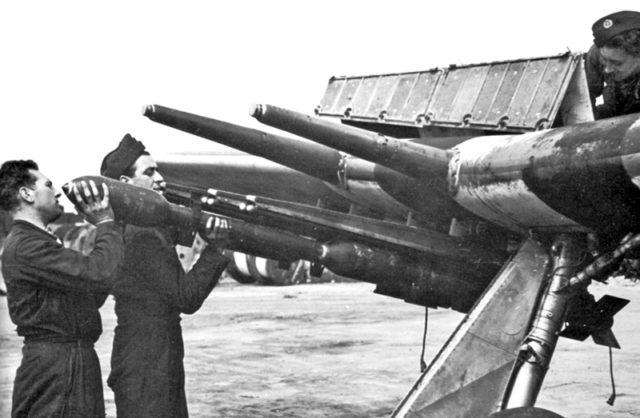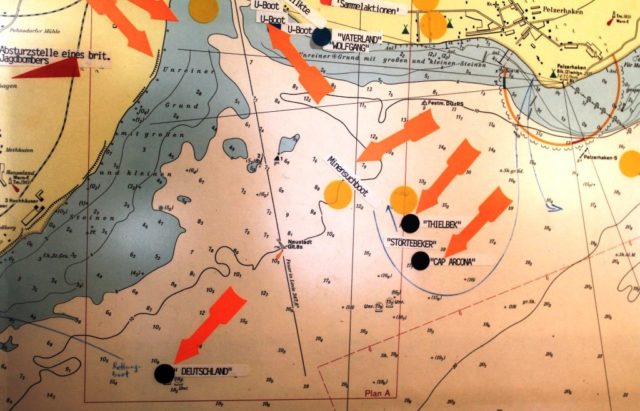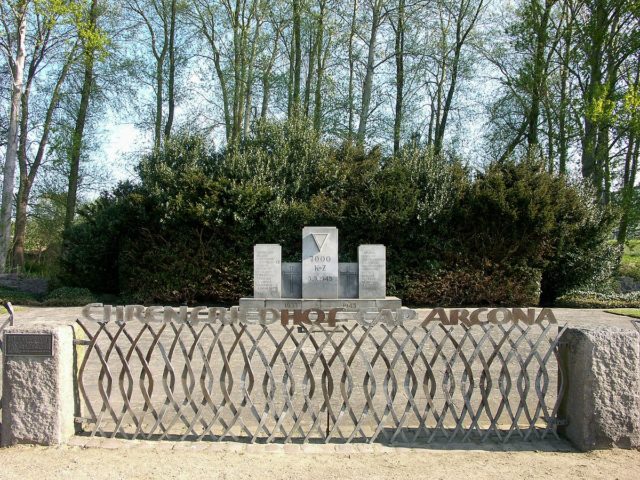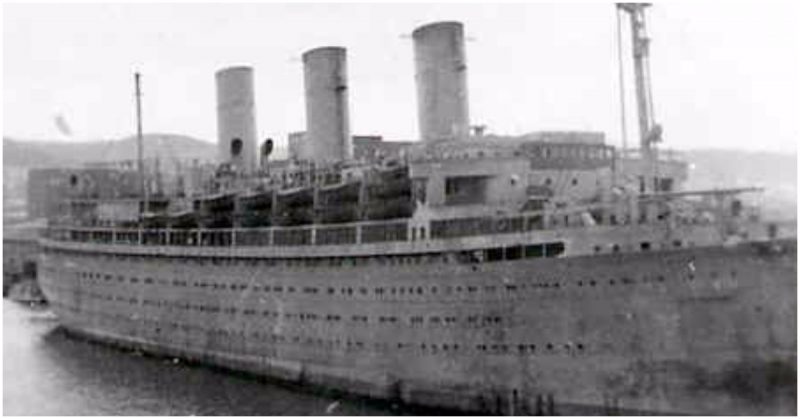The end of WWII was only days away, yet the RAF carried out the Nazis dirty work for them during the Cap Arcona disaster.
Docked in the Bay of Lubeck were the German ships Cap Arcona, Theilbek, and Athen. Below deck, they held nearly 10,000 prisoners in filthy and inhumane conditions. The majority were Jews who had just been moved from Neuengamme, Mittelbau-Dora and Stutthof concentration camps following the suicide of Adolf Hitler. There were also some Russian prisoners of war, prostitutes, homosexuals, pacifists, communist sympathizers and Jehovah’s Witnesses.
In the last frantic days of the Third Reich, the SS was trying to destroy any evidence of concentration camps, including prisoners. Many died below decks in death ships; their bodies piled up and tossed overboard each day by their Nazi guards. As the Allies advanced, capturing towns and territories that used to belong to Hitler’s empire, the ragged hordes of concentration camp survivors must have thought their liberation was near. Instead, the Nazis were likely to sink them in ships at sea to eliminate them.
RAF intelligence was informed that SS troops and high-ranking officers were boarding ships to flee Germany and make their last stand in Norway. Three Typhoon squadrons flew into the Bay of Lubeck on May 3, 1945, and attacked the vessels with rockets and 22mm cannons.

Their order to sink the ships and kill anyone in the water was unusual, but the SS were known for executing pilots who bailed out over enemy territory. The Typhoon squadrons had ice in their veins and revenge in their souls. They were only too happy to get back at the hated enemy. Reconnaissance flights had confirmed the presence of SS officers on deck.
Despite on the ground intelligence forces reporting to the Allies that camp prisoners had been loaded onto the ships, that information did not reach the pilots.
Derek Stevenson was the squadron leader for the attack. He described how aircraft had been attacking targets such as ships, refineries, and railways for days. Knowing that there were SS men on board made them more determined to succeed.
At the time the pilots carrying out the attack had no idea they were killing the people who had survived the horrors of Hitler’s death camps. Flight Lieutenant David Ince also told the newspaper: “If you are in a war, then these things happen. You try yourself to stop them happening. But it is the penalty of going to war, part of the downside, and part of the evil. Try as you will, you cannot stop it.”

Stevenson led his men in the attack, diving from around 9,000ft down to 3,000ft. He let loose with everything he had – launching eight rockets and delivering a hailstorm by shooting every single round from his cannon.
There were 4,500 prisoners on board the Arcona, which used to be a luxurious Hamburg-Sud Amerika ocean liner. The British hit the former cruiser with 64 rockets and 15 bombs across two different attacks. Only 350 people survived.
The Thielbeck was crammed with 2,800 men, women and children and was sunk in just 20 minutes – killing all but 50. In around two hours, more than 7,000 survivors of concentration camps were dead at the hands of the Allies.
The attack was a huge success, and the Typhoons returned at an altitude of 500ft to shoot survivors who were thrashing in the water. The bodies of those riddled with bullets were said to jump out of the water as they were hit.
Meanwhile, the carnage continued as the Germans launched boats to pick up their own survivors from the sea. They did not care as their propellers gruesomely killed or maimed others who were in the water.
Bodies littered the shoreline. The local population was ordered to dig mass graves to bury the dead. The only markings on the otherwise nameless gravestones was a number and a Star of David.

The commander of the Neuengramme Camp, where many of those killed during the Cap Arcona disaster had been imprisoned, was sentenced to death after the Nuremberg trials. So were many of his subordinates.
As news of the horrific death of so many Holocaust survivors filtered through, the British tried their best to prevent the information from spreading. With the victory against Hitler’s evil regime so close, there was a war-weariness and criticizing the liberating forces was unthinkable.
Now that time has passed, the 7,000 who perished so near to freedom should be remembered and honored.
